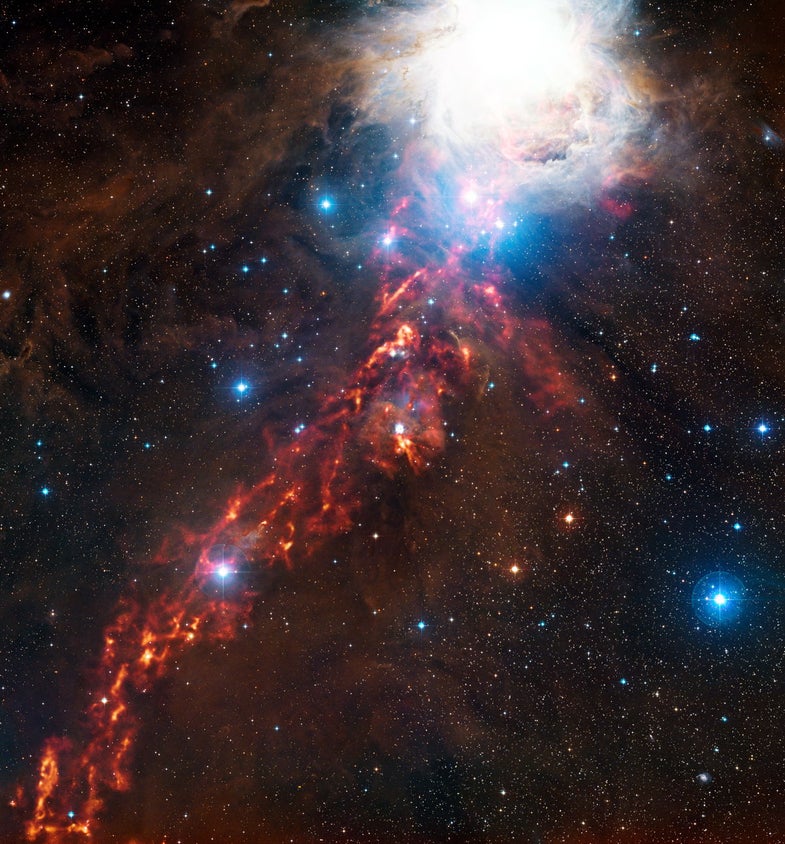Big Pic: A Fiery Ribbon Stretching Across Orion’s Belt
Inside the European Southern Observatory’s Atacama Pathfinder Experiment (APEX) telescope in Chile, there’s a submillimeter-wavelength camera perfectly tuned to peer...

Inside the European Southern Observatory’s Atacama Pathfinder Experiment (APEX) telescope in Chile, there’s a submillimeter-wavelength camera perfectly tuned to peer through the clouds of interstellar dust and gas that obscure our view of what’s going on elsewhere in the universe. Fortunately for us, the camera is also good at picking up the faint glow given off by those very same grains of dust, at wavelengths too long for human eyes to see. The result: images like this one a “fiery ribbon” (that’s how astronomers are describing it) stretching across a segment of the Orion Nebula some 1,350 light-years away.
But fiery though they may appear, these grains of interstellar dust are actually quite cold. In fact, the coldest objects captured by the APEX telescope have an orange tint, while the hottest objects appear blue.
The ribbon is part of a larger star-forming region within Orion’s belt called the Orion Molecular Cloud. The bright cloud at the upper right of the image is the object known as Messier 42, or more commonly the Orion Nebula. It is the brightest part of this massive star-forming region and the closest site of massive star-birthing to Earth.